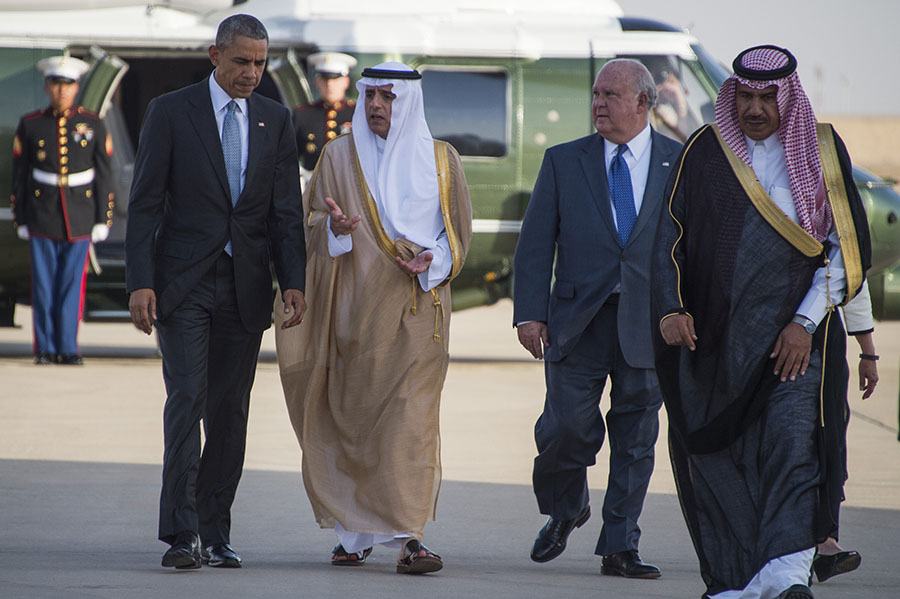What Lies Ahead for the U.S.-Saudi Arabia Alliance

JIM WATSON/AFP/Getty ImagesUS President Barack Obama (L) talks with Saudi Arabian Foreign Minister Adel al-Jubeir (2nd L) and US Ambassador to Saudi Arabia T.H. Joseph Westphal (2nd R) on April 21, 2016. Obama met Gulf leaders in Saudi Arabia to push for an intensified campaign against the Islamic State group.
While an alliance built on shared economic interests may seem more durable than one forged on common social and political mores, these bonds are not immune to wear and tear. In fact, some say this wear and tear may even lead to more conflict.
“The US-Saudi relationship has come under significant strain,” Shushan says, primarily because of “differences over Iran (Saudi and GCC opposition to the Iran nuclear deal, in particular) and Saudi frustration with a lack of US activism in the Middle East amidst the Obama Administration’s intention to pivot toward Asia.”
This, she adds, has led “the Saudis [to show] a new willingness to adopt assertive regional policies rather than depending on the US to do their bidding. Syria and Yemen are cases in point.”
Still, Shushan concedes that short of the fall of the House of Saud and its replacement with a government hostile to the U.S., nothing — not protracted war, ideological extremism or even a change in president — will fully erode this corrosive partnership built on power and petroleum.
“The rise of Iran and transnational terror groups (especially ISIS and al-Qaeda) have emerged as common threats,” Shushan told ATI. “These common interests will perpetuate the US-Saudi relationship, even as tensions wax and wane, and under either President Clinton or President Trump.”
Next, take an intense look at photos and stories that reveal what life is like under ISIS. Then, read up on what the West gets right and wrong about women in Islam.





